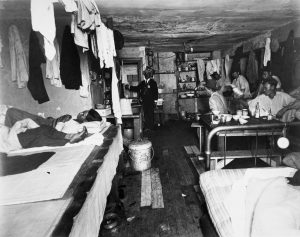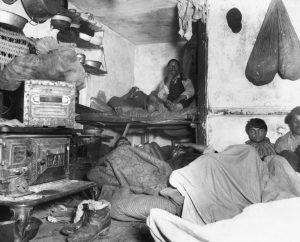Jacob Riis. “How the Other Half Lives”, Photo Collection, 1890
Throughout the years following the introduction of tenements for housing immigrants and domestic families the social unrest began to rise. The catalyst for this social unrest was due to the efforts of a man named Jacob Riis, a Danish-born author and photographer who would come to be known as the man who exposed the country to the numerous unlivable conditions of the city’s tenements.[1] These two photographs are part of his book “How the Other Half Lives” comprised of his accounts showing the horrible living areas that these families were faced with. The photo to the right illustrates that these people are basically sleeping on top of one another, which is in no way healthy, safe, or livable. But the families had no choice but to go through with it, due to their lack of sufficient income to move to better housing. Riis’s book pointed out facts of the tenements that would stun most of America and the world – the fact that 12 adults slept in a room some 13 feet across, and that the infant death rate in the tenements was as high as 1 in 10.[1] This information would not only cause unrest throughout America it would also call on lawmakers to act. Thus, in 1901 the Tenement Housing Act was passed. Giving tenants improved sanitary conditions, fire escapes, access to light, and over the next 15 years there were 200,000 new tenements constructed under supervision of city officials.[1]
John Fryer, “The tenement house law of the city of New York, with headings, paragraphs, marginal notes and full indexes”, book, copyright 1901
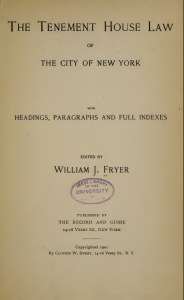
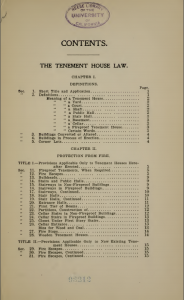
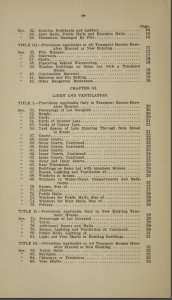
After the New York State Tenement Housing Act of 1901 was established, many New York City lawmakers and committees would be compelled to understand and acknowledge the problem at hand. Thus, write-ups published from people like John William Fryer were for educational and informational purposes. I have included only a small percentage of the entire book, but I believe these are the most informative. The contents of the book are as stated: Definitions, Protection from Fire, and Light and Ventilation. The Definition section is dedicated to explain the ‘meaning of a Tenement House’ with its’ contents stated below. When Fryer writes the meaning of a tenement house he hints at the fact that many of the already existing tenements do not have these aspects in their apartment. He then adds the section ‘Protection from Fire’ then listing all of the necessary precautions when constructing a tenement in order to keep the building safe from combustion. Meaning the walls would be constructed of iron, steel, or any other material that is not wood. One would assume that Fryer is not only stating these precautions for safety, but also not wanting to repeat the Great Chicago Fire of 1871.[2]
Propaganda for Reform
Sheer, Benjamin, Artist. Better housing the solution to infant mortality in the slums / / Benj. Sheer. New York, 1936.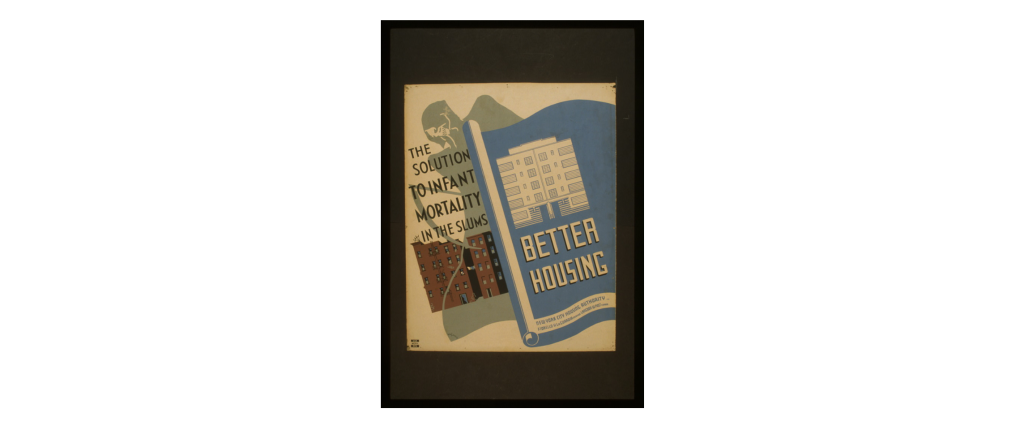 Federal Art Project, “Rotten living Decent living through planned housing”, New York, between 1936-1938
Federal Art Project, “Rotten living Decent living through planned housing”, New York, between 1936-1938
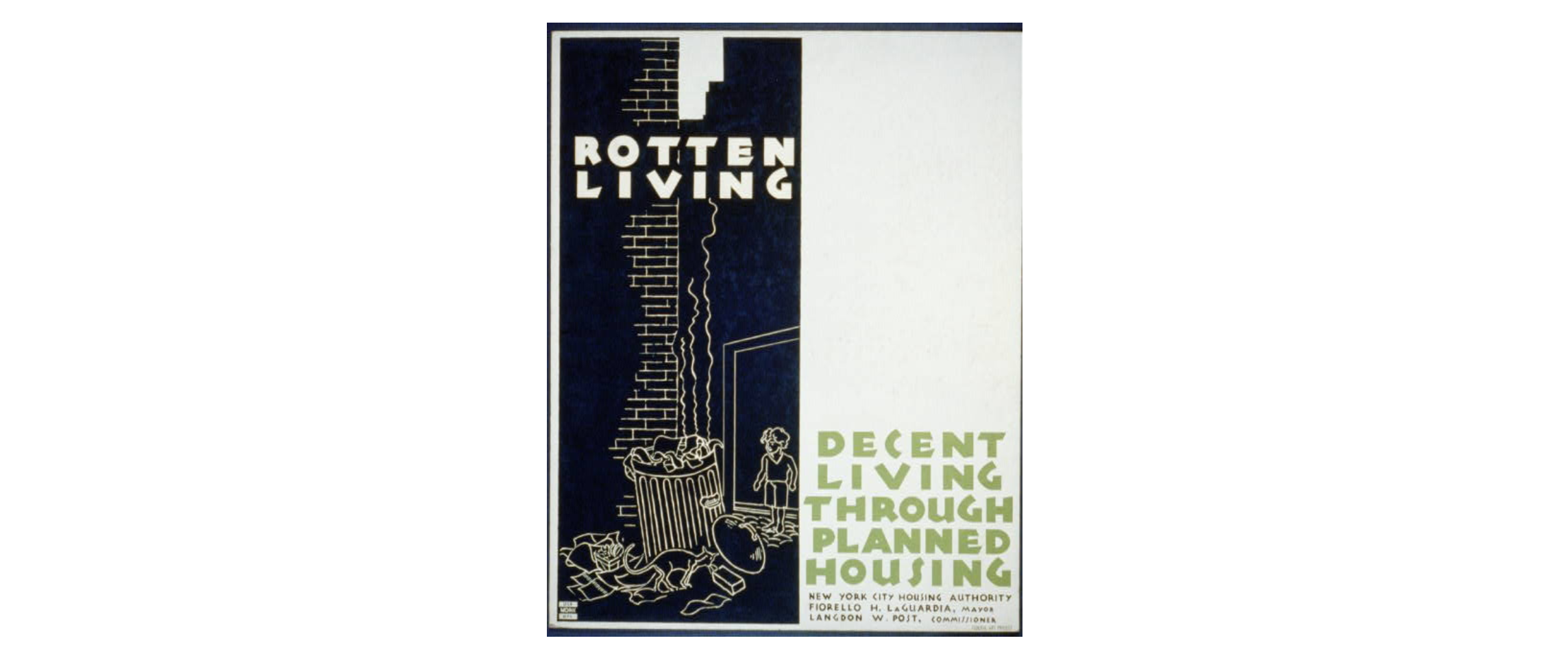
These propaganda posters were produced after Jacob Riis’s detailed book, “How the Other Half Lives”, was published, the need for ‘decent’ living was still a major problem in New York City at least. Commissioned by the New York City Housing Authority, both posters illustrate a need for social change due to the ‘Rotten Living’ still evident in the city even after many tenement housing laws were passed. The first poster was introduced by Benjamin Sheer who crafted this print in 1936 with the New York city Housing Authority. The intended audience would be tenants living in New York city that have faced years of unforgiving aspects of living in the ‘slums. Unfortunately, infant mortality was one of the most noticeable events that occurred in American cities. Due to the lack of suitable living, health practices, inadequate nutrition, and unsafe environments in the tenements, many newborn babies and young children would not make it. This print states that there needed to be a solution to the infant mortality rates, one of the many problems arising from tenement housing. Their solution was new and improved housing that would help decrease the negative effects of tight-knit tenement housing. Sheer illustrates a main factor in industrial cities, the housing problem. Almost all of the problems; economic inequality, unsuitable health practices, and young age morality rates, that tenants face stem from the housing problem.
- History.com Editors, “Tenements “, A&E Television Networks, Date Accessed December 16, 2019, Date Published April 22, 2010.
- The Editors of Encyclopedia Britannica, “Chicago Fire of 1871″ , Encyclopedia Britannica, Date Accessed December 18, 2019, Date Published December 2, 2019.

